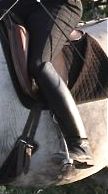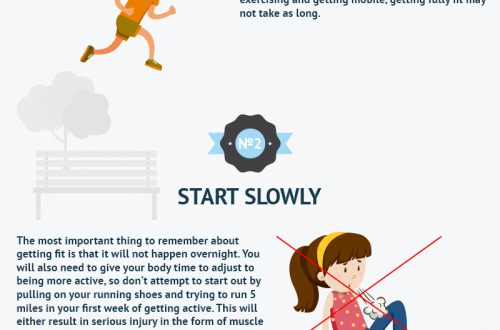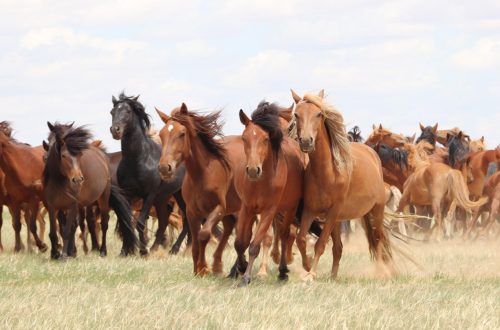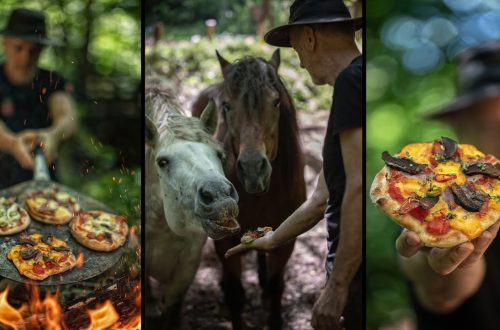
Biomechanics of the rider – the key that opens the horse
Biomechanics of the rider – the key that opens the horse
Biomechanics studies the functioning of the body in motion in terms of mechanical principles. Understanding the basics of biomechanics is especially important when learning to ride, because it is here that two biomechanical systems “collide” and combine, influence each other – each with its own way of functioning.
To achieve the correct biomechanical dynamics of two systems working together, we need not only to understand the horse, but, most importantly, to understand the biomechanics of the rider, who introduces an imbalance in a system that functions harmoniously separately from him.
Knowledge about the biomechanics of the horse, which allows it to carry the weight of the rider, is becoming increasingly sought after by riders. They are quite accessible for study, although sometimes information is not enough. But the question of the biomechanics of the rider is raised much less frequently.
There are many conflicting opinions about what is right, and many instructors and trainers choose to ignore the role of the rider’s gymnastic education and knowledge of how to use his body, preferring to focus entirely on the biomechanics of the horse. The problem is that the correct biomechanics of the horse under the rider is the result of the correct biomechanics of the rider! The rider should devote as much time to his physical development as to the physical development of the horse.
Every time the rider mounts the horse, he feels the powerful forces that the horse generates in motion. And since the horse’s natural movements do not support the weight of the rider without harm to his body, the rider must train his body to be able to properly adapt these forces and be able to transform them.
Just as the horse’s body does not have the inherent strength to be able to carry the rider regardless of his actions and still work correctly, so the human body is not designed to perform the functions of an ideal rider.
Why are there so many conflicting opinions about rider biomechanics? If you have ever read books about horseback riding, you have probably seen many descriptions of how a horse should move in great detail. But when it comes to the rider, we face many fundamental disagreements, whether in the writings of the “great masters” or modern experts. So, it is often said that the rider must be completely relaxed, but at the same time it is also said about the great effort that the rider must make when working on horseback. Most dressage schools emphasize the lightness of the controls being applied, but still a stronger application is the norm even for Grand Prize riders.
Many opinions exist regarding the correct seating of the rider. Why so many disagreements? In our opinion, so much confusion arises from a misunderstanding that a good rider is the result of a long process of work. What you end up with will be very different from what you did in the learning process. For example, when we look at a graceful ballerina, we do not see the endless hours of her hard work on the formation of the correct muscle corset, elasticity, development of muscle memory, which as a result will allow her to demonstrate amazing ease in controlling her body.
It is often said in riding textbooks that the rider’s feet should rest on the sides of the horse like wet towels. Many trainers interpret this to mean that the rider must completely relax the leg and let it hang from the long stirrups to achieve the “wet towel” effect.

In fact, this description is surprisingly far from the truth! In order for the rider’s leg to lie on the side of the horse like a damp towel, years of training must pass, during which a certain degree of joint mobility is developed. The rider must clearly control the tension of some muscles, keep others in good shape and relax others. Only in this way, the rider can put his foot on the body of the horse, so that it looks like a “wet towel”.
Thus, lightness is the result of the efforts that have been made to achieve it. Indeed, as in any sport or gymnastic discipline, the relative ease of doing it should improve. This is especially true in terms of the correct position of the rider’s legs. It is such a complex skill that Charles de Kuffy said: “Riders die without knowing it”! However, in our own experience, what started out as the seemingly impossible task of developing a stable, efficient leg position has become a reality through years of training (although there is always room for improvement). The rider who relaxes the leg and stretches the stirrups to the limit in an attempt to achieve the “wet towel” effect will end up with a stiff leg in the wrong position and in the wrong place after a while and, accordingly, the wrong effect on the horse. And all because he did not deal with his physical development as it was necessary. The “wet towel” effect cannot be achieved because the leg, with stiff joints and undeveloped muscles, is not able to properly lie on the side of the horse. The difference between what is meant and what should be the result relates to many aspects in the rider’s seat and how a particular skill is achieved. Relaxation or effort? And that, and that at the same time! The paradox in the biomechanics of the rider lies in the movement of different parts of the body in different directions. This explains why there are so many conflicting opinions about the position of the rider and how to develop it.
Some coaches say that the rider should be relaxed, while others say that he should make an effort. In fact, good riding – connected riding – is the ability to move in harmony with the horse. At the same time, certain joints should be mobile, and the muscles should be relaxed. Other muscles must work to maintain the posture and direct the flow of energy in the right direction. The body seems to develop in two opposite directions, and this is what makes riding such a unique discipline.

When you start working on one part of the rider’s body to harmonize with the movements of the horse that work posturally and rebalance, you discover a perfect picture of the alternating functions that the whole system performs, working in dynamics: one part works posturally (shown in the photo with blue arrows), which allows the adjacent part to be coordinated (green arrows), and vice versa.
In terms of impact on the horse, alignment allows the rider to be connected to the horse’s movements, while postural holding re-balances the horse and channels its energy. Both jobs are necessary, because the rider who is only trying to harmonize with the horse or follow its movements will end up being a mere passenger on an unbalanced, uncollected horse. At the same time, a rider who only works to restrain the horse will only cause resistance.
It is noteworthy that the same pattern of balancing forces is present in the horse, which works with the body in connection: a number of muscle groups that support the horse’s skeleton, its posture (have a “reverse” direction) are balanced by forward-moving muscles. Together they form a ring of connection that functions by moving momentum through the horse’s body. The rider’s body also has its own connection ring, but its direction is opposite to that of the horse’s connection ring. Both are connected like two gears in this mechanism. This gives us the unique ability to seamlessly transmit movement through two separate gears within a balanced mechanism.

This mechanism is connected by the back of the horse and the seat of the rider. The mechanism of the rider moves in the direction from below and forward (red arrow in the figure), the mechanism of the horse moves up and forward. This movement is only possible through correct postural tracking by the major muscles of the horse and rider. Unfortunately, instead of initiating it, most riders block the horse’s movement with misplaced hips and pelvis. The reason for this is the lack of proper work that provides the necessary development of the corresponding muscles of the rider. They do not participate in the movement, but only block it. Without this, there can be no postural control of the horse by the rider’s body, only control through the use of the reins.
Riders’ understanding of the biomechanics of bending the horse is essential to learning, as it is through bending that the rider can increase the strength and straightness of the horse’s hindquarters and the transfer of momentum from hind to forehand. The control of the rider over the distribution of their own weight and over the postural structures is necessary to achieve this condition of correct riding.
Knowing the elements of proper biomechanics and how they function is very important for us as riders. You will go a long way, and in those moments when you do not know how and when this or that part of your body should work, you will experience frustration before you reach what we we all strive.
Of course, just looking at the picture with arrows is not enough to understand what you need to do with your own body. You need clear instructions that will help you understand how you should sit, what you should do, how to feel while sitting. The most important thing is that you will get the answer only from the horse. Your horse following your commands is the only real confirmation of the correctness of your work. If you want to work properly or ride a horse, you must not only know how to train your body, but also in what direction to move. Developing proper riding skills is not a quick thing. To achieve the correct balanced movements from the horse, you can, first of all, use the controls correctly, and therefore your own body.
Translation by Valeria Smirnova (source).





